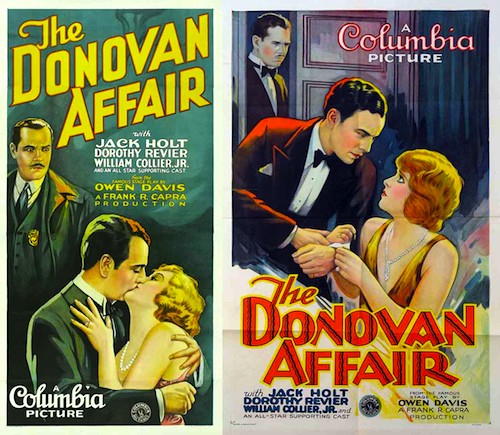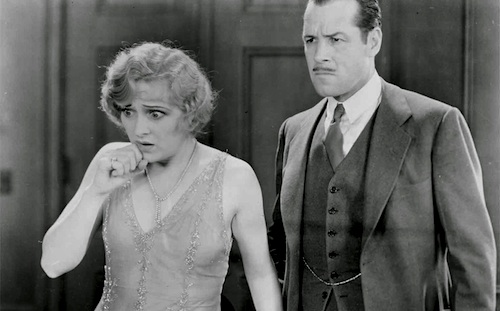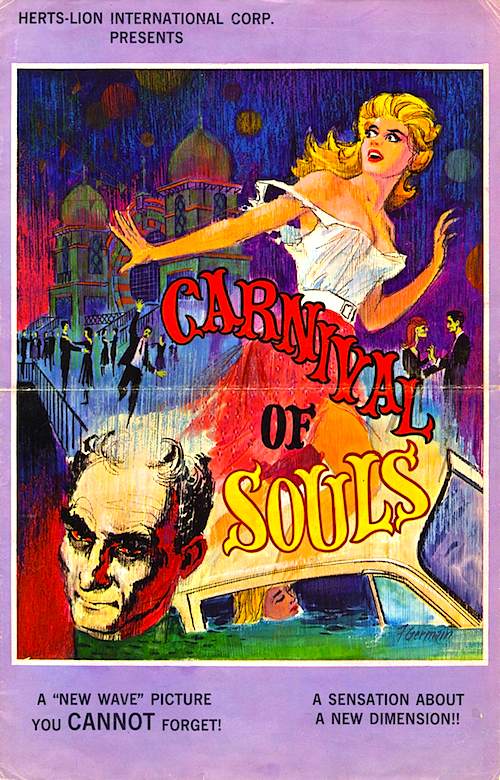 By Joe Bendel. Although everyone recognizes Frank Capra was spoofing old dark house mysteries in Arsenic and Old Lace, few understood he was also spoofing himself. That is because his very first 100% talky was a murder mystery set in an atmospheric manor, but almost nobody has seen it since its 1929 premiere. Perversely, there is a decent print preserved in the Library of Congress, but none of its sixteen inch Vitaphone soundtrack discs survive. On the other hand, we have the sound for its trailer, but not the film.
By Joe Bendel. Although everyone recognizes Frank Capra was spoofing old dark house mysteries in Arsenic and Old Lace, few understood he was also spoofing himself. That is because his very first 100% talky was a murder mystery set in an atmospheric manor, but almost nobody has seen it since its 1929 premiere. Perversely, there is a decent print preserved in the Library of Congress, but none of its sixteen inch Vitaphone soundtrack discs survive. On the other hand, we have the sound for its trailer, but not the film.
As part of his efforts to mount comprehensive Capra retrospectives, Film Forum repertory programmer Bruce Goldstein has reconstructed the dialogue to produce special “live read” presentations of Capra’s The Donovan Affair. Twenty-some years in development, Goldstein and company’s stagings were a highlight of last year’s TCM Film Festival and the current Frank Capra film series soon to conclude at Film Forum.
Jack Donovan is a gambler, adventurer, and all around cad. If you didn’t want to kill him, you probably didn’t know him very well. His next dinner date will be his last. He has been invited to the birthday party of Capt. Peter Rankin, who hates his guts, because he knows Donovan has been blackmailing his trophy wife Lydia (but he has not used any of the proceeds to pay off his gambling debts). Donovan also has eyes for her step-daughter, which rankles her tightly wound fiancé. To make matters worse, Donovan happens to be available now that he seduced and subsequently abandoned the Rankin’s maid.
Yes, Donovan only has himself to blame, especially when he has the lights turned out to show off his glowing cat’s eye ring, in a scene that only works in a synch-sound picture. When the lights come on again, we see someone has availed themselves of the opportunity to dispatch the heel. Soon the blustering Inspector Killian and his oafish right-hand man Carney are on the scene, but they do not inspire much confidence, especially when their attempt to recreate the murder works a little too well.
Yes, if we could hear them, Jack Holt and Fred Kelsey are probably putting the “ick” in shtick as Killian and Carney, but Capra seems to be having great fun playing with sound. Complicating matters for Goldstein and crew, Capra experiments with conversations conducted between people in different rooms, often outside the camera’s field of vision. Plus there are plenty of those chaos-generating blackouts. It is quite the tricky shoot, featuring a good deal of skulking outside the house and the exchanging of loaded glances.
Eschewing the MST3K aesthetic, the live read cast plays it scrupulously straight within the film’s dramatic context. Of course, they still convey the larger than life nature of their characters, maintaining an appropriately madcap energy level. For many viewers, Boardwalk Empire’s Allen Lewis Rickman and The Practice’s Michael Badalucco will be the most recognizable fuming and bickering away as Killian and Carney, respectively. However, for discerning patrons, James Karen is the man, having appeared in The Return of the Living Dead, Poltergeist, Samuel Beckett’s Film, and the original Broadway production of A Streetcar Named Desire. Yes, wow. Naturally, he brings the voice of authority to Capt. Rankin.

From time to time, lost films are rediscovered, but this is more like a resurrection. Donovan must have been somewhat successful, since Capra’s career continued on an upward trajectory following its release. It is clearly a product of its time, but it is frankly scandalous that Columbia could misplace both the sound and the script (forcing Goldstein and his cast to supplement an incomplete dialogue transcript found in the files of the defunct New York State Board of Film Censors with studious lip-reading sessions). This is Frank Capra we are talking about. Films like It’s a Wonderful Life, It Happened One Night, and Mr. Smith Goes to Washington are not just movies, they are pillars of American culture.
The effort was definitely worth it. Despite the nostalgic creakiness of the film, it leads to a greater appreciation of the breadth and depth of Capra’s career and his early mastery of sound. It is also just a lot of fun to watch the dark and stormy bedlam. This is something you cannot see every day, so if Goldstein and the Donovan players ever mount a live-read near you, jump at the chance to see it. The Donovan Affair definitely added something special to Film Forum’s Capra retro, but they have yet another special to come. Following the Wednesday night (10/22) screening of You Can’t Take It With You, Rickman will moderate a Q&A with Anne Kaufman and Chris Hart, the daughter and son of playwrights George S. Kaufman and Moss Hart.
Posted on October 21st, 2014 at 11:50pm.





